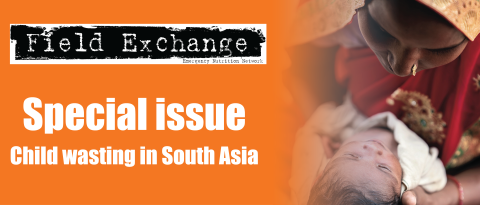Impact on birth weight and child growth of women’s groups with and without transfers of food or cash during pregnancy in Nepal
Research snapshot1
While the links between undernutrition in pregnancy and birth outcomes have long been established, understanding of the effectiveness of intervening prenatally to improve birth outcomes and subsequent child growth remains limited. This study aimed to explore potential interventions in pregnancy to improve birthweight and subsequent child growth until 16 months of age (measured by weight-for-age z-scores (WAZ)). Behaviour-change interventions were facilitated through community-based participatory learning and action (PLA) women’s groups, with and without food or cash transfers. A four-arm, non-blinded cluster randomised control trial was designed, with 25,092 pregnant women recruited for interventions between December 2013 and February 2015. The four arms consisted of: PLA alone (n=5,626, receiving nutrition and health educational sessions); PLA plus food (n= 6,884, receiving 10 kg/month of fortified wheat-soya ‘SuperCereal’ on a monthly basis); PLA plus cash (n= 7,272, receiving ≈USD7.5 per month, equivalent to the cost of 10kg of Super Cereal or two days’ wage labour); and a control arm (n=5,310, receiving government services). Women were entitled to one monthly transfer up to a maximum of seven transfers until delivery, provided they received the transfer personally and had photo ID cards. Primary outcomes were birthweight measured within 72 hours and WAZ measured at endline.
After exclusions, 10,936 women were eligible for outcome analyses. In PLA plus food/cash arms, 94% to 97% of pregnant women attended the PLA groups and received an average of four transfers. In the PLA-only cohort, 49% of pregnant women attended PLA groups. Response rate for birthweight was low (n=2,087; 22% of potential birthweights) due to conflict affecting field-team performance, but endline data was higher (n= 9,242). Compared to the control arm, mean birthweight was significantly higher in the PLA-plus-food arm by 78g (95%CI 13.9-142), but not significantly higher in PLA-only and PLA-plus-cash arms. Average WAZ measurements of children aged 0-16 months (average age nine months) sampled cross-sectionally at endpoint were not significantly different from those in the control arm. When exploring secondary outcomes, compared with control, more institutional deliveries (OR= 1.46; 95% CI 1.03, 2.06) and less colostrum discarding (OR=0.71; 95% CI 0.54, 0.93) were noted in the PLA plus-food-arm, but not in PLA-only or PLA-plus-cash arms.
This study showed that food supplementation with behaviour-change strategies during pregnancy increased birthweight (suggest cautious conclusion given low response rate on birthweight data [eds]). However, the improvements were not sustained by 16 months. This highlights the need for additional interventions for infants postpartum to improve growth outcomes.
1 Saville NM, Shrestha BP, Style S, Harris-Fry H, Beard BJ, Sen A, et al. (2018) Impact on birth weight and child growth of Participatory Learning and Action women’s groups with and without transfers of food or cash during pregnancy: Findings of the low birth weight South Asia cluster-randomised controlled trial (LBWSAT) in Nepal. PLoS ONE 13(5): e0194064. https://doi.org/10.1371/journal.pone.0194064


